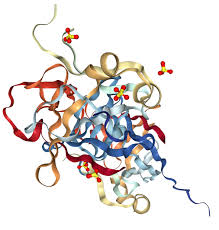Blog Post
Deciphering the Enigma of Interleukin-37: A Master Regulator of Inflammation
Interleukin-37 (IL-37) has emerged as a fascinating cytokine with potent anti-inflammatory properties, playing a crucial role in regulating immune responses and maintaining immune homeostasis. In this blog post, we unravel the mysteries surrounding IL-37, exploring its functions, impact on health and disease, and the latest scientific insights.
Understanding Interleukin-37
IL-37 belongs to the IL-1 cytokine family but stands out for its unique ability to dampen excessive inflammation and promote immune tolerance. It is primarily produced by immune cells such as macrophages, dendritic cells, and epithelial cells in response to inflammatory stimuli.
Functions and Mechanisms
The key functions of IL-37 include:
- Anti-inflammatory Action: IL-37 acts as a natural suppressor of inflammation by inhibiting the production of proinflammatory cytokines such as interleukin-1β (IL-1β), tumor necrosis factor-alpha (TNF-α), and interleukin-6 (IL-6).
- Immune Regulation: IL-37 modulates immune cell activation and polarization, promoting the development of regulatory T cells (Tregs) and regulatory B cells (Bregs), which play crucial roles in immune tolerance and immune homeostasis.
- Tissue Protection: IL-37 exerts protective effects on various tissues and organs by reducing inflammatory damage and promoting tissue repair and regeneration.
- Metabolic Regulation: Emerging evidence suggests that IL-37 may have metabolic effects, influencing lipid metabolism, insulin sensitivity, and metabolic inflammation.
Implications in Health and Disease
The dysregulation of IL-37 has been linked to several inflammatory and autoimmune conditions, including:
- Rheumatoid Arthritis (RA): IL-37 deficiency or reduced expression levels are associated with increased RA severity and joint inflammation, highlighting its protective role in autoimmune arthritis.
- Inflammatory Bowel Disease (IBD): IL-37 exhibits therapeutic potential in IBD by suppressing intestinal inflammation and enhancing mucosal healing, offering insights into novel treatment strategies.
- Cardiovascular Diseases: IL-37’s anti-inflammatory actions extend to cardiovascular health, where it mitigates vascular inflammation, atherosclerosis, and cardiac remodeling, showcasing its cardioprotective effects.
- Neuroinflammatory Disorders: IL-37 shows promise in neuroinflammatory conditions like multiple sclerosis (MS) and Alzheimer’s disease (AD), attenuating neuroinflammation and neurodegeneration pathways.
Therapeutic Potential and Future Directions
The therapeutic implications of IL-37 are vast, with ongoing research focusing on:
- Biologic Therapies: Biologic agents targeting IL-37 or its downstream signaling pathways are being explored for their potential in treating inflammatory and autoimmune disorders.
- Gene Therapy: Gene delivery approaches to enhance IL-37 expression or delivery of IL-37 gene constructs hold promise for modulating immune responses and promoting immune tolerance.
- Precision Medicine: Understanding IL-37’s role in patient-specific immune profiles may pave the way for personalized treatment strategies and tailored interventions in inflammatory diseases.
Conclusion
Interleukin-37 stands as a pivotal player in immune regulation and inflammation resolution, offering new insights into therapeutic avenues for a range of inflammatory disorders. As research advances, harnessing the potential of IL-37 holds promise for developing targeted therapies and advancing precision medicine approaches in the field of immunology.


